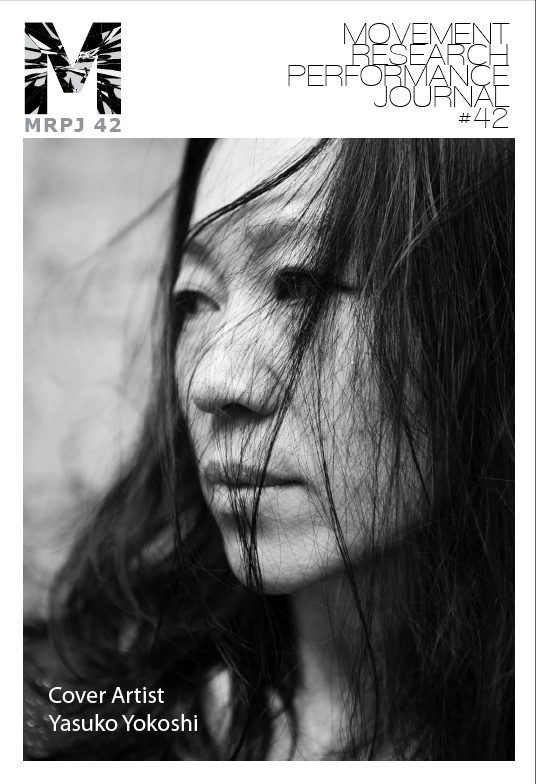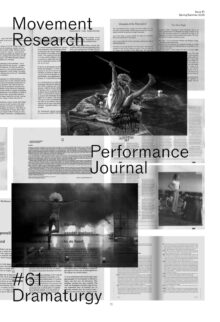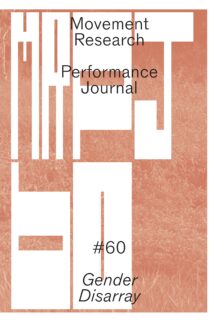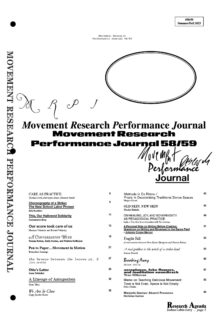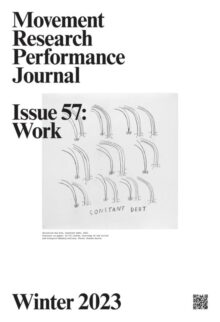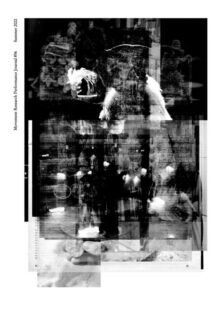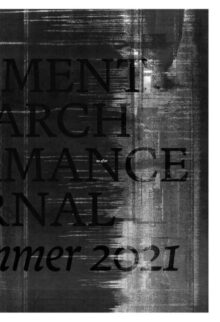EDITOR’S LETTER
“The worst economic environment of most of our lifetimes”—this was the topic of Movement Research’s 2012 Town Hall and also the context for several pieces in this issue. Maura Donohue responds directly to the Town Hall, writing on the decades-long decline of federal funding and how it has shaped artists’ working environment here in New York. In the Netherlands, a new performing arts festival is created as two older ones merge—due to changes in national funding policies, as reported by Cassie Peterson. And Cristiane Bouger writes on a new arts space that has improbably opened in Romania, where recent funding changes highlight issues of censorship that are perhaps not unique to formerly communist countries.
But I didn’t learn only about economics while working on this issue. Paisid Aramphongphen, Samara Davis, and the many respondents to the Curator/Presenter/Programmer poll cast light on facets of dance presenting. Nicole Daunic and niv Acosta unpack the discussion about race that was ignited by Deborah Hay’s MoMA performances. Much obliged to Justin Vivian Bond for lightening the mood with some words on supermodels, performativity, and launching a fragrance.
Gratitude to Trajal, Moriah, Troy, Buck, Zee, and Julie for all their work on this issue.
—Ursula Eagly
• • •
COVER ARTIST PORTFOLIO EDITOR’S LETTER
One thing that strikes me about Yasuko is that she is constantly venturing in to new territory. She never repeats herself and never looks back.
Yasuko tells Gia Kourlas: “Theater is magic—you believe in something that doesn’t exist. I just use the theatrical device and my strong belief to make it happen.” This was in 2003, just prior to her wild, improvisational solo-work Shuffle, and still rings true today. In the featured interview, Beth Gill remarks that in all of Yasuko’s work, there seems to be a sense of “impossibility that feels really important to the nature of the project.” In his essay, Reginald Jackson discusses the “effort to re-conceptualize pre modern forms against contemporary ones to reshape the parameters of cultural ownership.”
Following Shuffle, Yasuko became deeply involved in studying a highly subtle form of Kabuki dance perfected by Kanjyuro Fujima VI (1909-1990) with Fujima’s disciple Masumi Seyama VI who has collaborated with her on three works: what we when we, Tyler Tyler and BELL. In her first collaboration with Seyama, what we when we, Deborah Jowitt notes in her 2006 review: “There are no wasted motions. Every small act seems burned onto the space and onto your retina.”
Yasuko tells us her work with high school students to make Reframe the Framework DDD was a response to the extreme precision of what we when we. We reached out to two of those students to get their impressions on that work six years later. One of them reflects: “I thought dance was just one thing, but I realized it was many things.” Yasuko is currently working on a film Hangman Takuzo. With this work, perhaps she continues to reimagine what dance can be.
I know Yasuko’s recent work as a performer. I’ve worked with her since 2008, first on Tyler Tyler and now on BELL. My first experience dancing with Yasuko ran deep. I was launched into learning a new dance form and given so much trust as a performer inside of this seemingly impossible task of a piece. Even within the formal structure of Tyler Tyler, I felt aware of Yasuko’s improvisational spirit. One of my first impressions was that as a director, she really knew when to push and when to back off and let something breathe. She was very sensitive to what it felt like to be a performer. I enjoyed the opportunity to edit this portfolio and “dig” a little deeper to find out more about her earlier work as a dancer and improviser.
I hope you enjoy. And thank you to all the people who contributed.
—Julie Alexander
